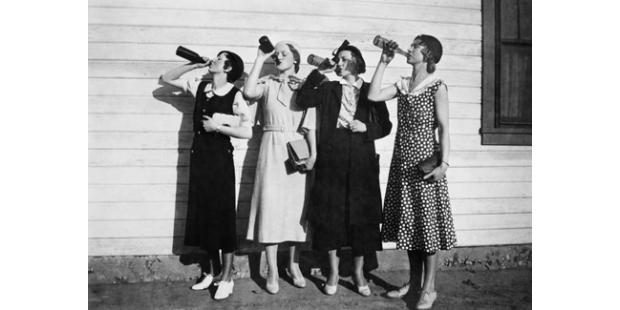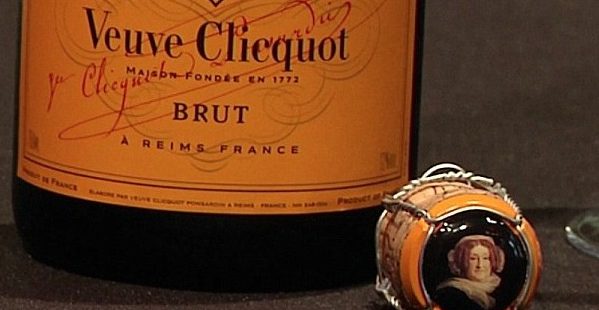
Dear Ladies, Thanks for all the juice
Alcohol has, for some reason, always been considered a man’s prerogative. In the spirit of Women’s Day let’s give credit to some women without whom our bars wouldn’t be half as interesting as they are today.
The Champagne Widows:
Women were instrumental in shaping the Champagne industry and leading it on its path to glory. Some of the most significant stories relating to the bubbly’s marketing and branding have women as their central characters. Let’s begin in the mid-1800s in France, a time when an unmarried woman was the property of her father and a married one, of her husband. Only a widow could control her own life and company. Madame Barbe-Nicole Clicquot took over the House of Clicquot after she was widowed at age 27. This sprightly lady was responsible for the distinctive modern Champagne bottle which is so recognizable today. She also created the world’s first Champagne label – the orange label that has remained on every bottle of Veuve Clicquot. Most interestingly however is perhaps her invention of rosé Champagne. Can you imagine a time without the blush-coloured bubbly? Did I mention that the word ‘veuve’ translates to ‘widow’?
After her husband’s death, Madame Louise Pommery set up her Champagne house and is credited with developing the ‘brut’ dry-style Champagne. Today when we think Champagne we think of the brut (dry/not sweet) style. But that wasn’t always the case. For a large part of its history Champagne was a very sweet wine. It is said that it was at the behest of another widow, Queen Victoria, that Pommery went brut. The Queen enjoyed Champagne but found it too sweet until Madame Pommery made some changes. Breaking away from the norms of that time Pommery revolutionised the production of Champagne.
The third famous Champagne widow was Madame Lily Bollinger who in the 1940s sustained her husband’s Champagne house through the turmoil of the World War and later built their international markets and its reputation, which led it to become James Bond’s preferred bubbly. Lady Bollinger was also known for her sparkling wit. Remember this gem? “I drink it when I’m happy and when I’m sad. Sometimes I drink it when I’m alone. When I have company, I consider it obligatory. I trifle with it when I’m not hungry and drink it when I am. Otherwise, I never touch it. Unless I’m thirsty.”
The Beer Babes:
It’s grossly ironic when people say ‘beer is a man’s drink’ especially since it was women that first created beer some tens of thousands of years ago. There are many opposing theories about exactly where beer originated, but most historians agree that the birthplace of beer was in the areas of ancient Babylon, Sumeria and Egypt. In these parts the brewing was a woman’s job. It’s not surprising really since food and sustenance was considered a woman’s responsibility and beer is essentially liquid bread. These brewsters called ‘Sabtiem’ in Sumeria made their brews from a variety of ingredients including spices and tree barks by invoking the blessing of Ninkasi, the patron goddess of brewing. The popular toast of the day was ‘May Ninkasi live with you. Let her pour your beer everlasting.’
Their beers came in various styles and for various occasions like the ‘bride-ale’ for instance, a beer sold at weddings for the bride, and ‘groaning’ beer, consumed by mothers during labour. Imagine that!
The Whisky Women:
While on the subject of Egyptian women, they are also credited for creating the first pot still. An apparatus that was and still remains instrumental in distilling whisky. As macho a drink as it might seem, women have had quite a prominent role in the history of whisky. In his book ‘Whiskey Women: The Untold Story of How Women Saved Bourbon, Scotch, and Irish Whiskey’, US writer Fred Minnick draws attention to two Scottish women whom he credits with transforming the industry – Elizabeth Cumming who owned the Cardhu distillery in Speyside in the late 19th century, and Bessie Williamson, who owned Laphroaig in Islay in the 20th century. Both these women raised the level of their respective distilleries and laid the groundwork for their brands to become the national and international bigwigs that they are today.
On a different continent, American women had their own whiskey battles to fight. It may be that the history books focused on Al Capone but it’s a known fact that women ran the show during the 1920s prohibition in America. Women bootleggers came in all statures – from the pretty girls with naïve faces who no one would suspect, to the rich gutsy widows who financed ships to smuggle whiskey. The women did it with such élan that agents believed that sales-wise they outsold the men five times over.
So after carefully considering all these anecdotes and inasmuch as it’s hard for half the population of the world to concede, what better day to admit then that sometimes it takes a woman to do a man’s job better.


Wow Karina…such an educative article….loved it.
This is rather interesting! You are killing it Karrinnaaaaah! Sharing it :*